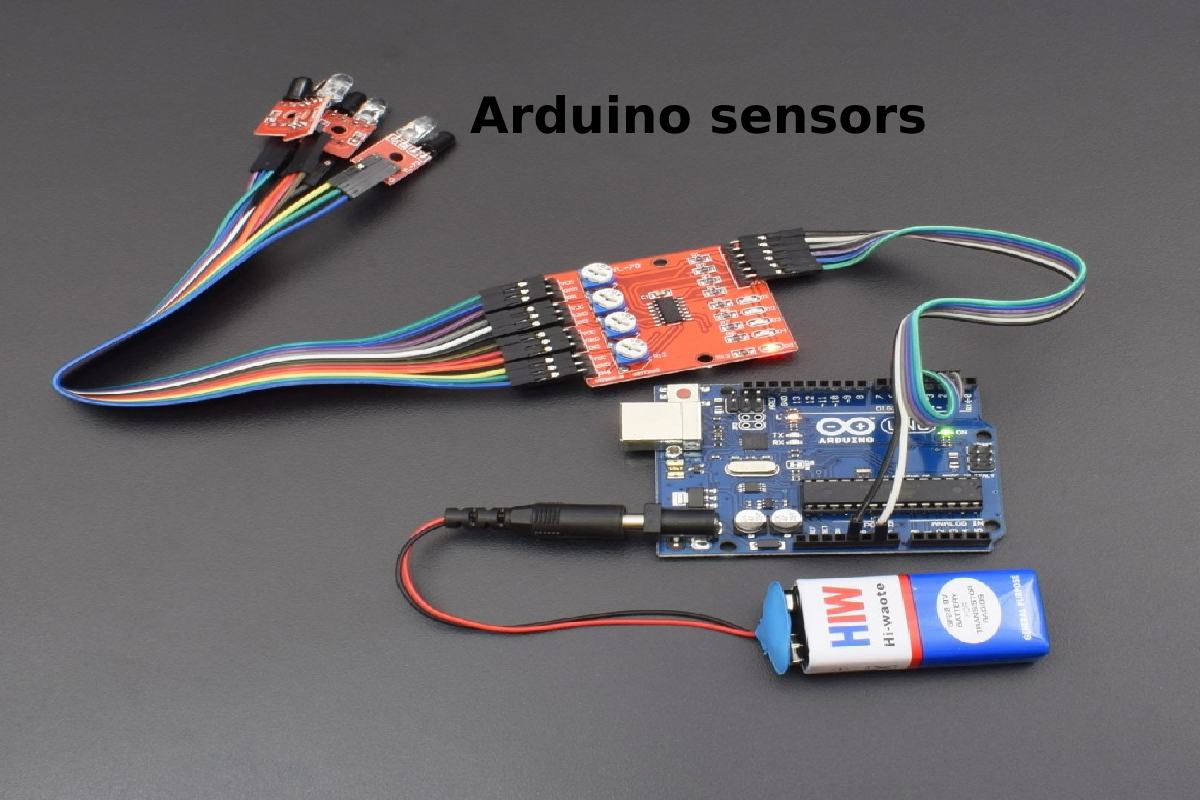Table of Contents
Introduction
The Arduino sensor Kit is an electronic piece that can be commanded through a small controller, consisting of a programmable electric panel and a software system (ide), a software system used to load the computer code into the physical board written in c++.
The Arduino does not need a programmer like other sensors but is enough by connecting it to a cable (USB) to load the necessary symbols and carry out several tasks simultaneously depending on the desired goal.
As a result, many small electronic sensors have been made that can detect the physical changes surrounding them, which are easy to connect to the erdino piece, their ability to take tasks with ease and ease, and combine several sensors simultaneously and carry out many electronic projects.
Types of Arduino Sensors Kit
The sensors associated with Arduino are divided into several types, including those that rely on reading continuous analog values, including those that deliberately read digital values, each with a specific role and task according to the purpose to be applied, the most famous of which are: sensors to measure the intensity of sound.
Motion detection sensors.
Sensors to measure the proportion of gas in the atmosphere.
The aim of sensors at monitor weather conditions, measuring humidity, air pressure, and temperature.
Sensors for light detection.
sensors to measure water level, soil moisture.
The Sensors can sense vibrations with high accuracy.
Sensors to Measure the strength of the surrounding magnetic field.
The Sensors to measure air pressure.
Examples of Arduino sensors Kit
Here are some of the Arduino sensors that have made the implementation of engineering projects possible. And it is easy to apply with proven and impressive results. Including Ultrasonic Sensor(HC-SR04 Ultrasonic Module).
Infrared Obstacle Avoidance sensor.
Soil Moisture Sensor.
Microphone sensor sensor
Digital Barometric Pressure Sensor
Photoresistor sensor.
Digital thermal sensor – Temperature sensor. Gas ratio sensor(MQ-2 Gas sensor).[
Motion Sensor(SW-420 Motion sensor).
Humidity and Rain Detection sensor.
Speed sensor module.
Infrared Flame Detection sensor.
Heat and humidity sensor together at the same time (DHT11 Temperature and Humidity sensor).
Antenna sensor for sending and receiving data (RF 433MHz Transmitter/Receiver). It is sensitive to change voltage difference (5V 2- Channel Relay module); You can use it when delivering the Arduino with a piece. They require an electrical voltage above 5 volts.
Sensitive to the sound of an Active Piezo-Buzzer Module, used in alarms, its types vary depending on the height of the sound and its unit. Heart beat-Pulse Sensor.
Erdino sensor is used in several areas depending on their type and purpose; you use sensors to sense atmospheric moisture or pressure, high temperatures, sound intensity, movement, gas content in the atmosphere, light detection, high vibrations, speed or fire detection and can be used in the medical field to measure heart rate and blood pressure.
How do Arduino sensors Work?
The principle of the functioning of the Arduino sensor usually depends on a range of factors, the most important of which is its quality. For example, Arduino UNO sensors need to connect to one or more additional components and to understand the mechanism of action of Arduino sensors. The components.
And divisions of the electronic circuit, which consist of 3 categories, you have to understand Input devices, including buttons and keys, as well as sensors and sensors. So sensors are on the circuit’s input list. Processors include standalone microcontrollers. And single-board computers, such as Arduino.
Outputs, also known as triggers, are the part that can convert voltages into light or sound waves that enable the user to feel and feel depending on the type of sensor or sensor used. Thus alerting them to a situation such as high temperature if you use a high heat sensor.
Practical applications of projects using Arduino sensors are the easiest way to understand the principle of the work of these sensors. As the specialized library of Arduino contains a large and diverse amount of sensors, which has opened up a wide range of scope for building electronic projects and entering them into a variety of sectors.
Including: make a rainwater warning device, using a water level measurement sensor, or humidity, and giving it an alarm when it reaches a certain degree, determined when programming the Arduino piece.
A self-irrigation plant system makes it easy based on a soil moisture sensor; when it generates a fine signal showing you can monitor soil moisture. The Irrigation performs automatically when the value is below the required limit. Make a device to detect toxic gases that is export in factory environments, such as butane, propane, alcohol, and others, by relying on a gas sensor (MQ-2).
Conclusion
The Arduino sensor electronic piece is a smart tablet, capable of communicating with many electronic sensors at the same time and carrying out all tasks accurately. And also, as mentioned in the previous sensitive understanding, there are many types of erdino sensors.
Therefore, Many jobs that you accomplish as soon as they connect to the right way with the Arduino. In addition to their use in various projects carried out using the Arduino tablet.


